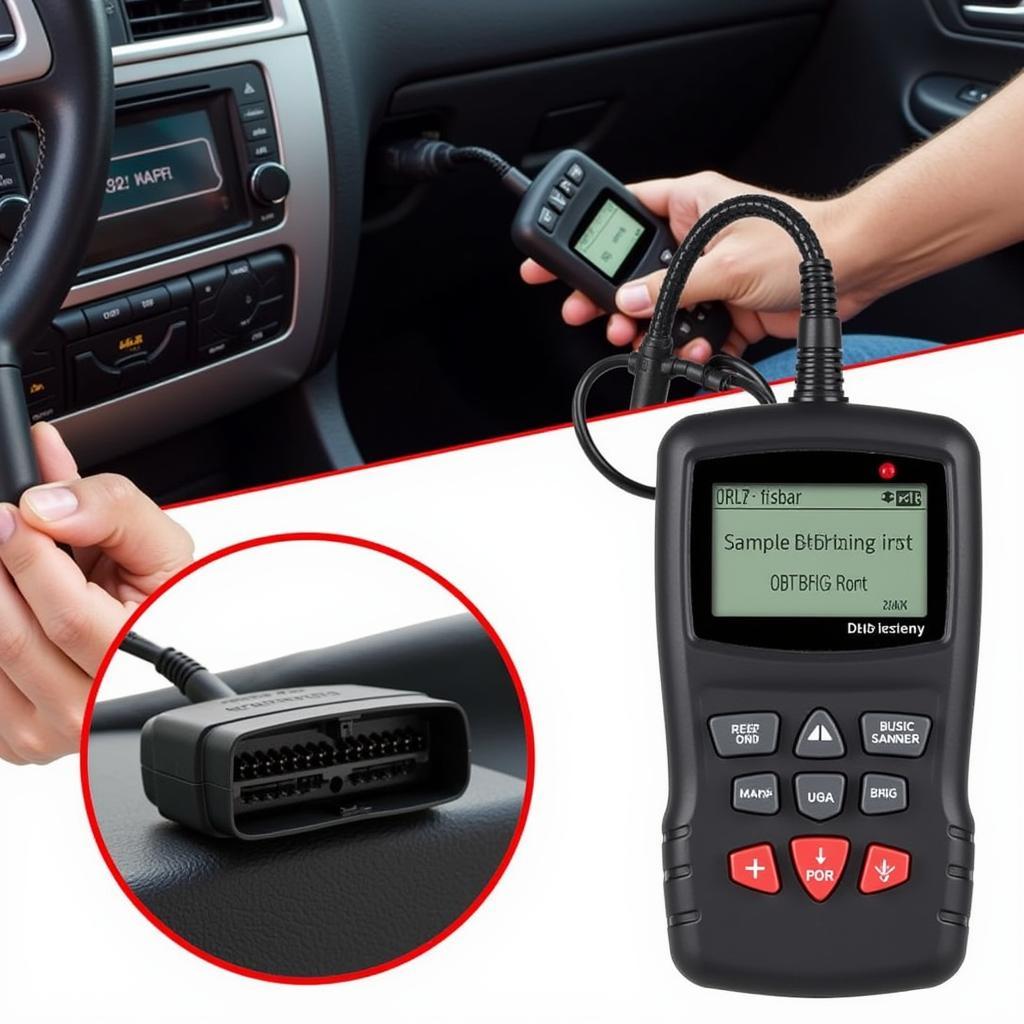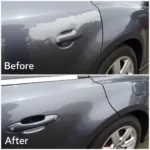Car codes diagnostic is crucial for understanding your vehicle’s health. From identifying minor issues to pinpointing major malfunctions, diagnostic trouble codes (DTCs) are the language of your car, and learning to interpret them can save you time, money, and frustration. This guide provides a deep dive into the world of car diagnostics, equipping you with the knowledge to navigate car trouble like a pro. You can even download a helpful car diagnostic app free download to assist you.
Understanding the Importance of Car Codes Diagnostic
Diagnostic trouble codes, or DTCs, are alphanumeric codes that pinpoint specific malfunctions within your vehicle’s systems. They are generated by the onboard diagnostic system (OBD-II), a standardized computer system present in most vehicles manufactured after 1996. When a sensor detects an issue, the OBD-II system stores a corresponding DTC, which can then be retrieved using a diagnostic scanner.
How Car Codes Diagnostic Works
The process involves connecting a diagnostic scanner to your car’s OBD-II port, usually located under the dashboard. The scanner communicates with the OBD-II system, retrieving stored DTCs and other relevant data. Understanding these codes is key to effective car repair. Some scanners even offer advanced features like live data streaming and freeze frame data, allowing mechanics to see the exact conditions when a fault occurred.
You can also explore our comprehensive car diagnostic codes list pdf for a more detailed understanding of common codes.
Decoding the Car Codes: Types and Meanings
DTCs are standardized, following a specific structure. The first character indicates the system where the fault lies (e.g., “P” for Powertrain, “B” for Body, “C” for Chassis, “U” for Network). The following two characters represent the subsystem, and the last two pinpoint the specific fault. For example, P0301 indicates a misfire in cylinder 1.
Common Car Code Diagnostic Issues
Some frequently encountered DTCs include P0420 (catalytic converter efficiency below threshold), P0171 (system too lean – bank 1), and P0014 (camshaft position “B” – timing over-advanced or system performance – bank 1). Recognizing these common codes can help you anticipate potential issues and understand their severity.
Why Car Codes Diagnostic Matters
Early detection of car problems is crucial. Car codes diagnostic allows you to address issues promptly, preventing further damage and potentially saving you significant repair costs down the line. Moreover, understanding these codes empowers you to communicate effectively with mechanics, ensuring you receive the appropriate service. Check out our helpful car diagnostic program for further assistance.
“Regular car codes diagnostic is like a regular health check-up for your car,” says automotive expert John Miller. “It can identify potential problems before they become major headaches.”
Car Codes Diagnostic Tools
Several diagnostic tools are available, ranging from basic code readers to advanced professional scanners. Choosing the right tool depends on your needs and technical expertise.
OBD2 Scanners for Specific Car Makes
For specific car makes, dedicated scanners may provide more in-depth information. You can find more information about obd2 diagnostic scanners for south african cars.
“Investing in a good diagnostic scanner can pay for itself many times over,” adds Sarah Chen, a seasoned mechanic. “It gives you the power to diagnose issues yourself and avoid unnecessary trips to the mechanic.”
Conclusion
Car codes diagnostic is an essential aspect of car maintenance and repair. Understanding these codes empowers you to take control of your vehicle’s health and make informed decisions about repairs. By utilizing the information and resources provided in this guide, you can navigate the world of car diagnostics with confidence, saving time, money, and potential headaches. Remember, regular car codes diagnostic is key to a healthy and well-maintained vehicle. Explore further details about chery cars diagnostic codes if you own a Chery vehicle.
FAQ
-
What is a car diagnostic code?
A car diagnostic code is an alphanumeric code that indicates a specific malfunction within a vehicle’s system. -
How can I read car diagnostic codes?
You can read car diagnostic codes using a diagnostic scanner connected to the OBD-II port. -
What does P0420 mean?
P0420 typically indicates a problem with the catalytic converter. -
How often should I perform car codes diagnostic?
It’s recommended to perform car codes diagnostic at least annually or whenever you experience unusual car behavior. -
Where can I find a list of car diagnostic codes?
You can find a list of car diagnostic codes online or in car repair manuals. -
What should I do if I get a diagnostic code?
If you get a diagnostic code, it’s best to consult a qualified mechanic to diagnose and address the issue. -
Are car diagnostic scanners expensive?
Car diagnostic scanners vary in price, from affordable basic code readers to more expensive professional-grade scanners.
Need assistance with your car diagnostic needs? Contact us via WhatsApp: +1(641)206-8880, or Email: [email protected]. Our 24/7 customer service team is ready to help.



